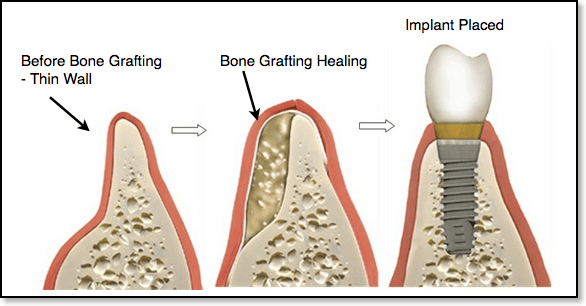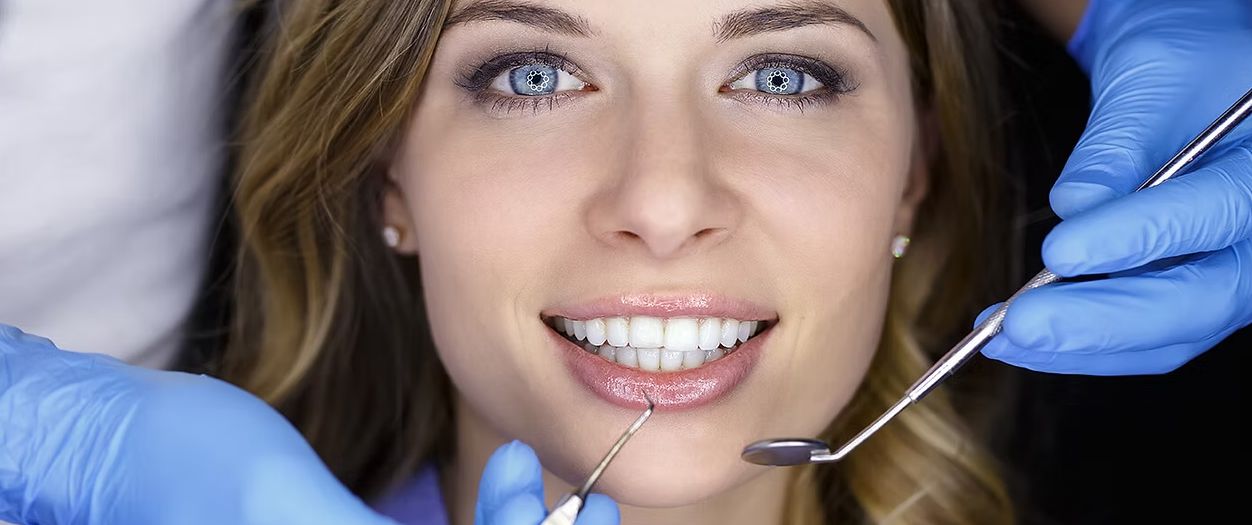
Dental implants are widely regarded as the gold standard in tooth replacement, offering superior stability, natural functionality, and aesthetic results. They are designed to function just like natural teeth, securely anchored into the jawbone with a titanium post that fuses seamlessly with the bone tissue. This fusion, known as osseointegration, typically occurs within a couple of months and creates a stable foundation for a fixed crown, bridge, or denture.
However, for dental implants to be successful, the patient must have sufficient bone density in the jaw to support the implant. In cases where the bone is insufficient, it can pose a challenge for traditional implant procedures. Fortunately, modern dentistry offers effective solutions such as bone grafting to restore or enhance bone density, enabling patients to receive dental implants even if they have experienced significant bone loss.
What is Bone Grafting for Dental Implants?
Bone grafting for dental implants involves a procedure where bone material is used to rebuild or augment the deficient areas of the jawbone. This process ensures that the jaw has adequate support to hold the dental implants securely in place. Bone grafting not only enhances the success rate of dental implant surgeries but also improves the overall function and appearance of the mouth.
In the past, patients with insufficient bone density were often not considered candidates for dental implants. Today, bone grafting techniques can remedy this issue, allowing for more comprehensive tooth replacement options. Dental clinics in Budapest offer high-quality bone grafting services at affordable prices, making it an attractive destination for those seeking effective and affordable dental treatments.
Types of Bone Grafting for Dental Implants
There are several methods used to achieve bone replacement, depending on the patient’s condition and the extent of bone loss. These methods include:
1. Bone Grafting with Bio-Oss Material
Bio-Oss is a highly effective and widely used bone substitute in regenerative dentistry. It consists of natural bone particles that integrate with the existing bone to provide a stable foundation for dental implants. Over a period of 4-6 months, the Bio-Oss material undergoes ossification, integrating into the natural bone structure. Once the bone has sufficiently healed, dental implants are placed, and the final restoration is completed after another 3-4 months.
Bio-Oss is a great option for patients with mild to moderate bone loss in both the upper and lower jaw. Its compatibility with living bone allows for a predictable and successful outcome in dental implant procedures.
2. Bone Replacement from the Jaw
In cases where Bio-Oss alone may not provide sufficient bone density, bone can be harvested directly from the patient’s own jawbone. This technique is commonly used for more advanced bone loss and offers excellent results. After harvesting the bone, it is used to supplement the deficient areas of the jaw, with ossification taking place over a 6-month period. This procedure is minimally invasive and involves only a local or general anesthesia.
The recovery time for jaw bone harvesting is typically 1-2 weeks, and the procedure is highly successful due to the use of the patient’s natural bone, which enhances integration with the surrounding tissue.
3. Bone Replacement from the Hip
When jawbone grafting is insufficient, an alternative option is to harvest bone from the patient’s hip. This technique is used for more extensive bone loss and provides a higher volume of bone for reconstruction. The procedure is performed under general anesthesia, and the bone is removed from the iliac crest (the top part of the hip bone).
The surgery takes about 3 hours, and recovery time is typically 2-3 weeks. Sensitivity may be felt both in the donor area (hip) and the recipient area (jaw), but this method allows for a successful and durable dental implant foundation.
4. Bone Replacement from the Fibula Flap
In cases of significant bone deficiency, particularly in the mandible (lower jaw), bone can be harvested from the fibula, a larger and more abundant source of bone. This technique is particularly useful for reconstructing large portions of the jaw, typically 1-5 cm in length.
The harvesting procedure takes about 3-5 hours and is performed under general anesthesia. The recovery time is typically 3-4 weeks, with the possibility of some discomfort in both the donor and recipient areas. This method is often used in major reconstructive surgeries for patients who require substantial bone restoration.
Benefits of Bone Grafting for Dental Implants
- Improved Success Rate: Bone grafting significantly enhances the likelihood of a successful dental implant procedure by providing a solid foundation for the implant to fuse with.
- Restores Functionality: With sufficient bone support, dental implants can function just like natural teeth, restoring both chewing ability and oral health.
- Aesthetic Results: Bone grafting helps preserve the shape of the jaw, leading to more natural-looking results and preventing further bone resorption that could affect the facial structure.
- Long-Term Solution: With proper care and maintenance, bone grafting and dental implants offer a long-lasting solution for missing teeth, providing stability and durability for many years.
Bone Grafting in Budapest, Hungary
Budapest is a leading destination for dental care, offering advanced bone grafting techniques and high-quality dental implants at competitive prices. Patients from around the world, particularly those with bone density issues, choose Budapest’s dental clinics for their expertise in bone augmentation and dental restoration. Whether you’re looking for affordable dental implants or bone grafting procedures, Budapest offers a wide range of treatment options to meet your needs.
Final Thoughts: Bone Grafting for Dental Implants in Budapest
If you are experiencing bone loss and need dental implants, bone grafting offers a highly effective solution to restore the necessary bone density for implant success. With a variety of bone replacement methods available, patients can achieve optimal results with minimal recovery time. Dental clinics in Budapest are at the forefront of bone grafting techniques and dental restoration procedures, providing patients with affordable, high-quality care.
If you’re considering dental implants but are concerned about bone loss, contact a dental clinic in Budapest today to discuss your options for bone grafting and ensure a successful, long-lasting smile.
